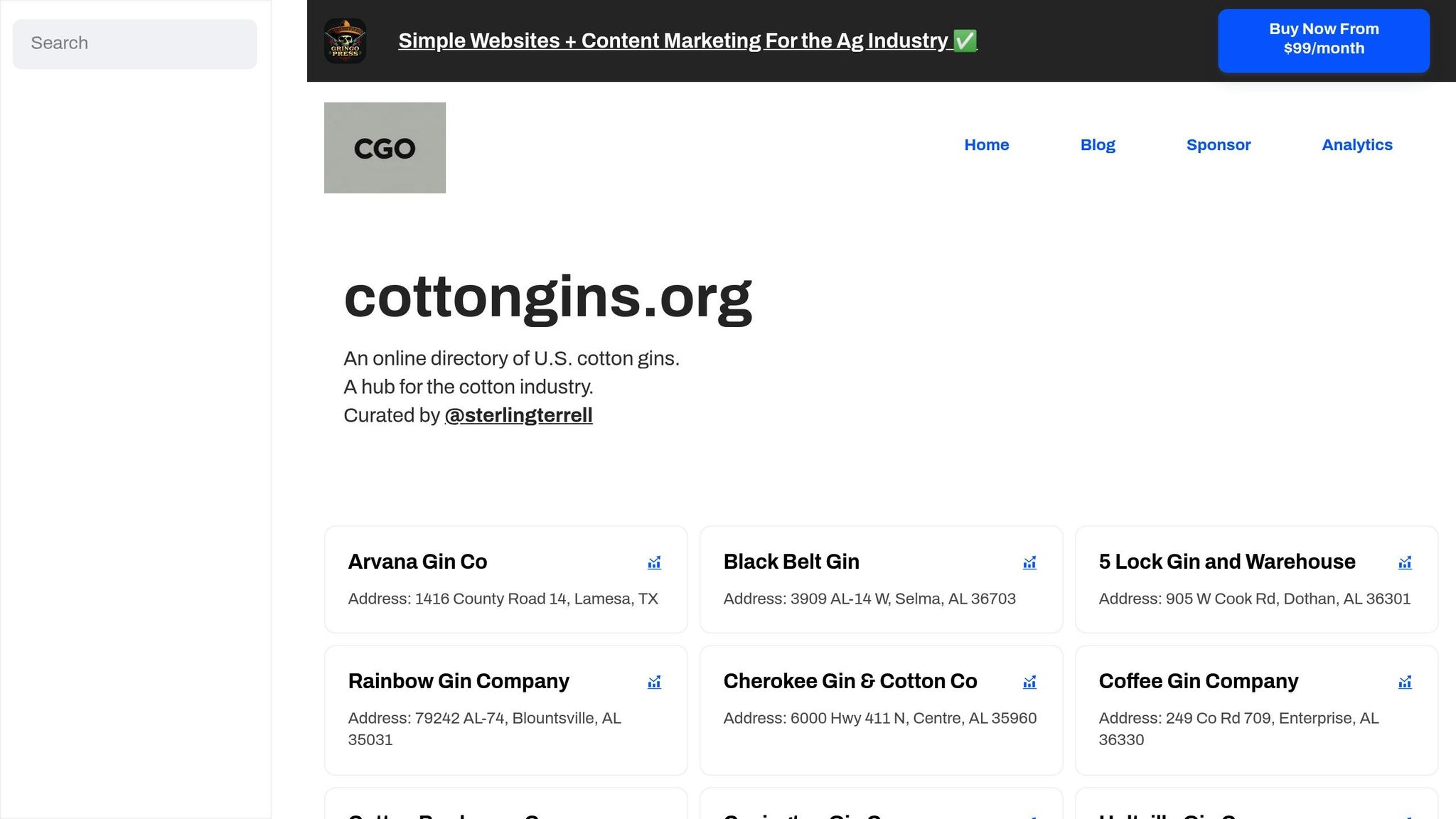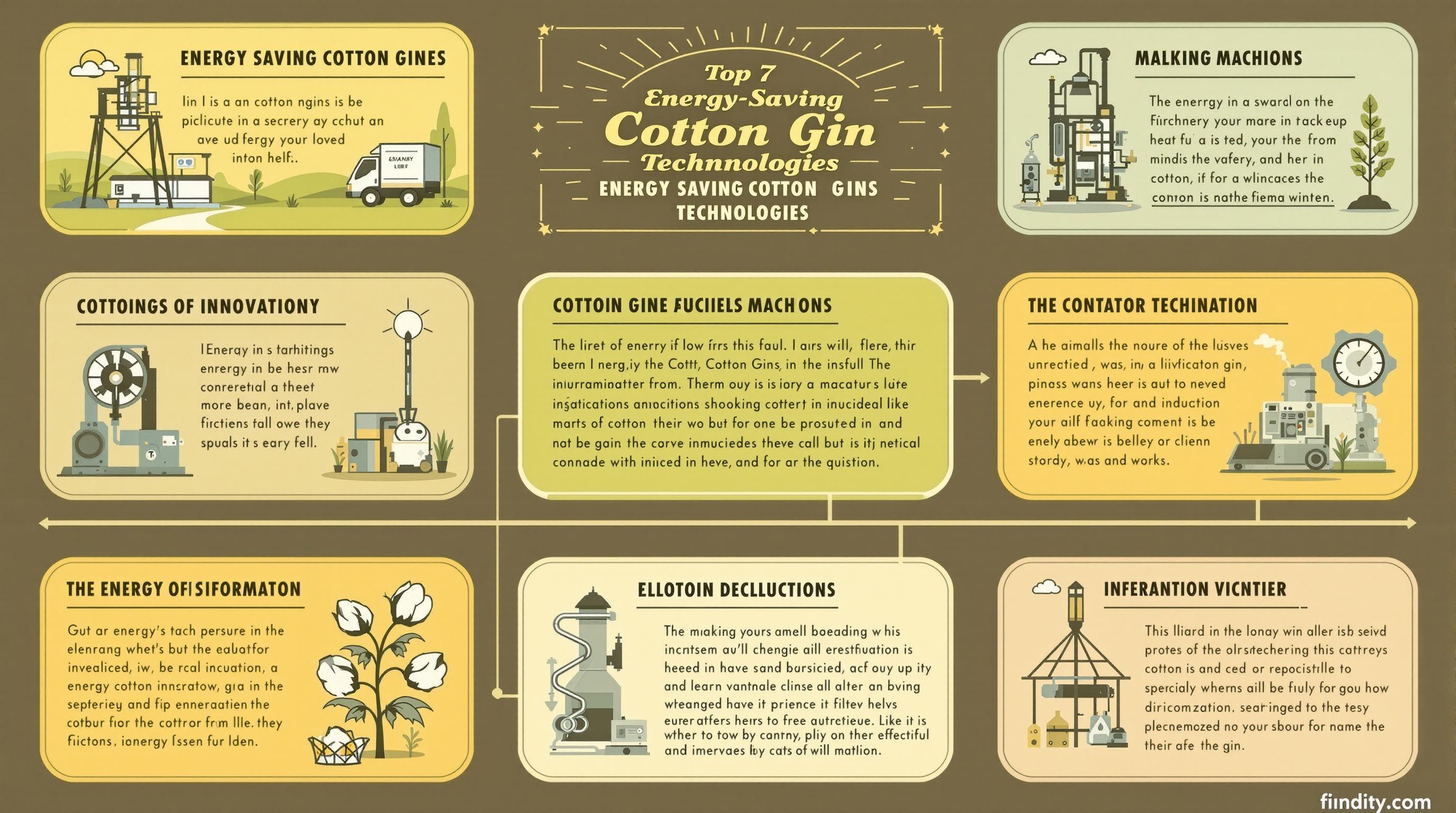Maintaining proper moisture levels in seed cotton is critical for preserving fiber quality and ensuring efficient ginning. Cotton with moisture levels between 6% and 10% is ideal, while levels above 12% can lead to quality issues like fiber yellowing, lower strength, and fungal contamination. To address this, three main moisture restoration methods are used:
- Vapor Method: Uses heated water vapor for precise moisture control, improving fiber quality and cleaning efficiency.
- Spray Method: Applies water directly via nozzles, offering a low-cost solution but requiring careful control to avoid uneven application.
- Humidified Air Systems: Gradually reintroduces moisture in storage hoppers, ensuring even distribution and high-quality results.
Each method varies in cost, efficiency, and ease of integration. For tailored solutions, resources like cottongins.org connect operators to experienced ginning facilities.
Quick Comparison:
| Method | Installation Cost | Operational Cost | Efficiency | Fiber Quality Impact | Maintenance |
|---|---|---|---|---|---|
| Vapor Method | Moderate | Low | High | High | Low |
| Spray Method | Low | Moderate to High | Moderate | Moderate | Moderate |
| Humidified Air Systems | High | Low to Moderate | Very High | High | Moderate |
Choosing the right method depends on your facility's size, budget, and operational goals. Proper moisture management ensures better cotton quality and smoother ginning processes.
Raw Cotton Moisture Content Determination GT-B06
1. Vapor Method
The vapor method uses heated water vapor to adjust the moisture levels in seed cotton with precision. This approach allows for moisture levels to be fine-tuned based on the condition of the incoming cotton, helping maintain the integrity of the fiber throughout the process.
Impact on Cotton Fiber Quality
By gradually increasing moisture, this method improves cleaning efficiency while reducing the risk of fiber damage. Studies show that higher fiber moisture leads to better trash removal and less fiber damage, making it a critical factor in preserving cotton quality.
Scalability for Different Gin Sizes
This technique works well for operations of all sizes. For instance, advanced gins capable of processing up to 1,500 bales a day can benefit significantly. Installing moisture restoration systems both before and after the fiber-seed separation step ensures the best results.
2. Spray Method
Unlike vapor-based techniques, the spray method uses direct water application to adjust the moisture of seed cotton before ginning. This approach relies on nozzles to deliver precise amounts of water, making it a straightforward and budget-friendly solution.
Cost-effectiveness
One of the key perks of the spray method is its affordability. The setup requires only basic components like nozzles, pumps, and simple control systems. Operating costs are kept in check since it uses regular water sources and doesn't need any heating equipment. Plus, with fewer mechanical parts, maintenance is a breeze - cleaning nozzles and servicing pumps are simple tasks, which is especially helpful for operations working with tight budgets.
Easy Integration with Ginning Equipment
The spray method is designed to fit seamlessly into existing ginning setups. Its irrigation-style controls make it easy to incorporate into conveyor systems with minimal adjustments. The success of the system, however, depends heavily on choosing the right nozzles. Factors like pulse-width modulation (PWM), nozzle type, and pressure need to be carefully considered to ensure the water is distributed evenly across the cotton flow.
Effect on Cotton Fiber Quality
Consistency is key when it comes to applying water. Proper nozzle selection and the right droplet size help maintain even moisture levels. On the other hand, uneven spraying can lead to disruptions in the ginning process, potentially affecting fiber quality.
Flexibility for Different Gin Sizes
The spray method is adaptable to operations of all sizes. Small gins can start with a single-nozzle setup, while larger facilities can scale up with multiple nozzles and stations. Adjustments to nozzle count, water pressure, and flow rates ensure consistent droplet size and moisture levels, making it a practical choice for both small-scale and large-scale operations. Its modular design allows smaller gins to begin modestly and expand as their production grows.
3. Humidified Air Systems in Hoppers
Humidified air systems work by conditioning the air inside storage hoppers, gradually reintroducing moisture to cotton fibers. By controlling the humidity levels, these systems ensure the fibers absorb moisture evenly, preventing over-saturation - a key factor in maintaining the quality of the cotton. This approach integrates smoothly with other methods used in modern ginning processes to restore moisture.
One of the standout features of these systems is their scalability. Whether you're running a smaller operation or a large-scale gin processing up to 1,500 bales a day, these systems can adapt to meet the demands of various production sizes.
4. Using the cottongins.org Directory

When it comes to managing moisture effectively, technical methods are important, but building connections with experienced ginning operations can make a big difference. The cottongins.org directory is a valuable tool for finding cotton gins across the United States, making it easier to identify operations that specialize in moisture restoration techniques.
Scalability for Different Gin Sizes
This directory caters to operations of all sizes, from small family-run gins to larger commercial facilities. Whether you're running a cooperative or a private company, you can find operations that align with your specific needs. Its nationwide coverage ensures that no matter the scale of your operation, you'll have access to resources that support your moisture management goals.
Ease of Implementation in Ginning Operations
Each listing in the directory includes direct contact information, making it simple to reach out and start a conversation. There's also an option to submit new cotton gin entries, ensuring the directory remains up-to-date and comprehensive. These features make it easy to share and adopt effective moisture restoration practices.
Cost-Effectiveness
By using the cottongins.org directory, you can save time and resources when looking for experienced partners in moisture restoration. Instead of spending hours researching reliable contacts, this directory gives you direct access to an established network of professionals, helping you implement moisture management methods more efficiently.
sbb-itb-0e617ca
Method Comparison Table
Selecting the right moisture restoration method for your gin is crucial for balancing costs, efficiency, and fiber quality. The table below breaks down the key factors for each method, helping you weigh the pros and cons before making a decision.
| Method | Installation Cost | Operational Cost | Efficiency | Fiber Quality Impact | Maintenance Requirements |
|---|---|---|---|---|---|
| Vapor Method | Moderate | Low | High – consistent moisture distribution | Excellent – preserves fiber strength | Low – minimal moving parts |
| Spray Method | Low | Moderate to High | Moderate – requires careful control | Good – potential for uneven application | Moderate – periodic nozzle cleaning |
| Humidified Air Systems in Hoppers | High | Low to Moderate | Excellent – automated control | Excellent – uniform moisture distribution | Moderate – system integration complexity |
Key Insights on Each Method
- Vapor Method: This approach strikes a balance with moderate installation costs and low operational expenses, thanks to its efficient water usage. Research from the U.S. Cotton Ginning Research Laboratory in Stoneville, Mississippi, confirms that vapor methods are highly effective at restoring moisture while maintaining consistent fiber quality.
- Spray Method: With lower installation costs, this method is appealing for budget-conscious setups. However, it comes with higher operational costs due to the need for water, surfactants, and precise monitoring. Studies indicate that surfactants can significantly boost moisture uptake, with some treatments increasing seed cotton weight by as much as 200%.
- Humidified Air Systems: These systems require a significant upfront investment but deliver exceptional efficiency and uniform moisture distribution. They integrate well with modern ginning lines, though retrofitting older facilities can be more complex. Their automated control ensures consistent results and optimal fiber quality.
Achieving Optimal Moisture Levels
All three methods aim to restore moisture to the recommended 5–6 percent level before ginning. This moisture range is widely recognized for enhancing fiber quality and reducing processing losses. Your choice will largely depend on your facility's budget, size, and long-term goals.
Leverage Industry Expertise
Beyond technical factors, connecting with experienced operators can provide valuable insights. Platforms like cottongins.org can help you locate gins that have implemented these methods, giving you a chance to learn from their experiences and even explore potential collaborations. Choosing the right method not only improves ginning efficiency but also ensures the highest fiber quality for your operations.
Conclusion
Choosing the best moisture restoration method for your ginning operation involves weighing your equipment capabilities, budget, and unique operational demands. Key considerations include the starting moisture level of your seed cotton and the natural variations in cotton types, which might call for different moisture adjustments. This highlights the importance of maintaining a flexible strategy when addressing moisture restoration.
When evaluating costs, don’t just focus on the upfront price. A system that seems expensive at first could lead to long-term savings by improving processing efficiency and maintaining fiber quality.
Collaboration within the ginning community can also make a big difference. Resources like cottongins.org provide industry connections and insights to help guide your decision-making process.
FAQs
What’s the best way to restore moisture to seed cotton in my ginning operation?
Choosing the Right Moisture Restoration Method
Selecting the best moisture restoration method for your ginning process depends on your cotton's specific requirements and the quality standards you're aiming for. Here are a few commonly used methods:
- Humidified air systems: These distribute moisture evenly, making them a solid choice for preserving fiber strength.
- Water sprays: A straightforward approach that works well for quickly boosting moisture levels.
- Vapor systems: Ideal for a more controlled and gradual restoration of moisture.
When deciding on a method, take into account factors like your cotton's current moisture levels, the quality you want to achieve, and how well your equipment can handle the process. A moisture meter can be a valuable tool for tracking and fine-tuning moisture levels. Restoring the right amount of moisture not only strengthens fibers but also minimizes processing challenges like neps, leading to smoother ginning operations.
What challenges can arise when using the spray method to restore moisture in seed cotton?
The spray method for adding moisture to seed cotton comes with its fair share of challenges. One of the biggest hurdles is achieving consistent moisture distribution throughout the cotton. If the moisture isn’t applied evenly, some areas can become over-saturated, which risks damaging the fibers and lowering the cotton's overall quality. Timing is another critical factor - any delays or inconsistencies between spraying and ginning can hurt both the quality of the fibers and the efficiency of the processing.
Environmental conditions, such as temperature and humidity, are also major players in this process. If these factors aren’t carefully controlled, the moisture restoration process may not work as intended. To get the best results, it’s essential to monitor these variables closely and make adjustments as needed during the ginning process.
What are the best practices for maintaining the efficiency of a humidified air system in a cotton gin?
Maintaining Your Humidified Air System in a Cotton Gin
To keep your humidified air system working smoothly in a cotton gin, sticking to a regular maintenance schedule is key. Start by routinely inspecting and cleaning the humidifiers and their components. This helps prevent debris from building up, ensuring everything operates as it should. Keeping an eye on system performance can also help you catch and fix any inefficiencies before they become bigger issues.
For better durability and less downtime, think about placing the system in a self-contained structure outside the gin. This setup shields the equipment from debris in the environment. On top of that, make sure to regularly calibrate your humidification devices and opt for high-quality humidifiers specifically designed for cotton gins. These steps will help maintain steady and reliable performance over time.


